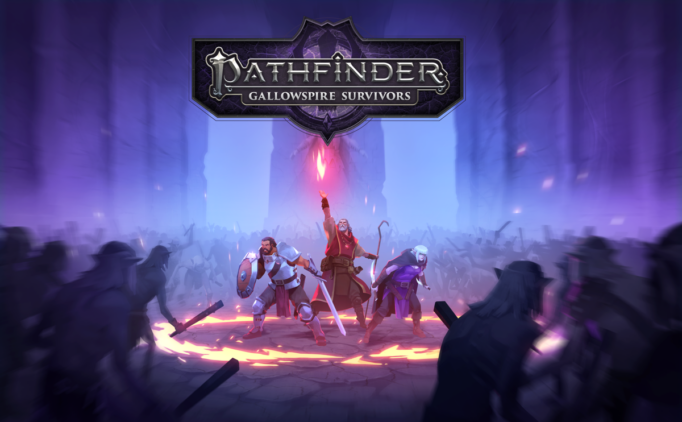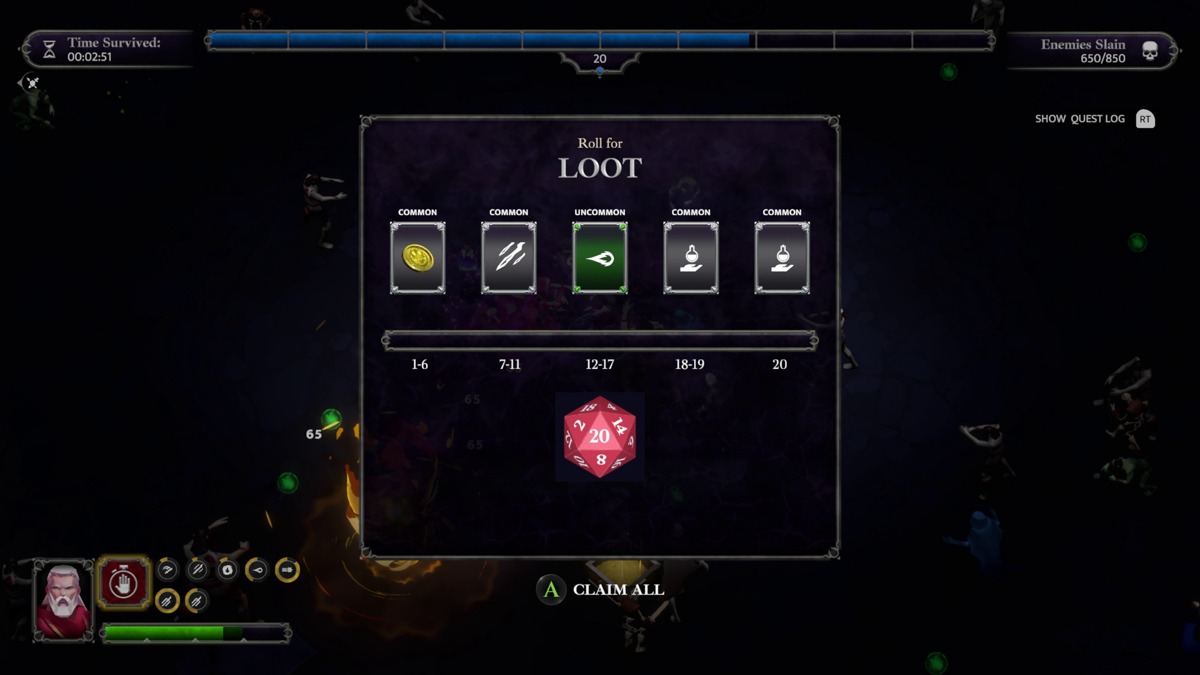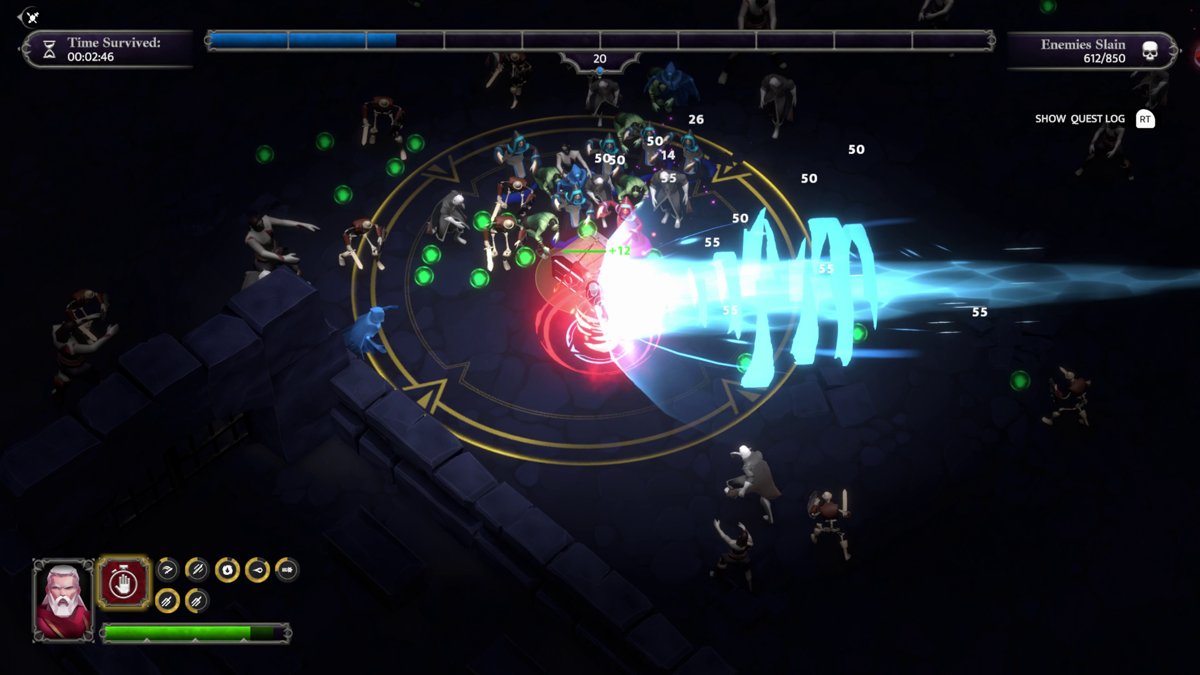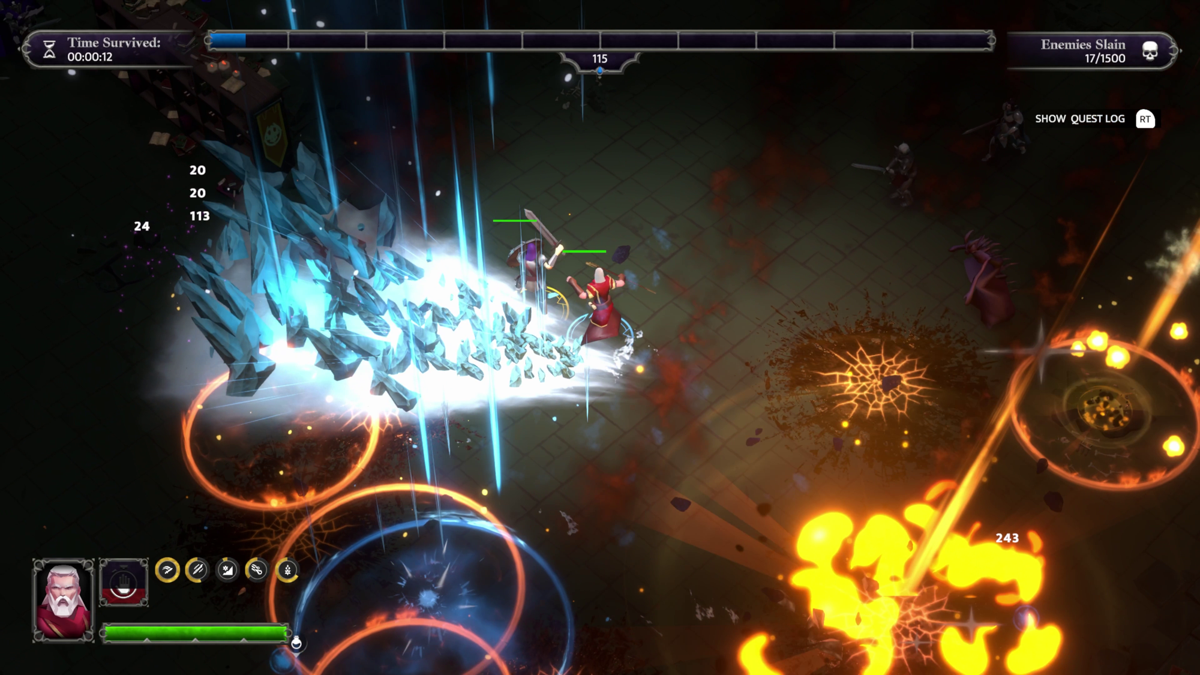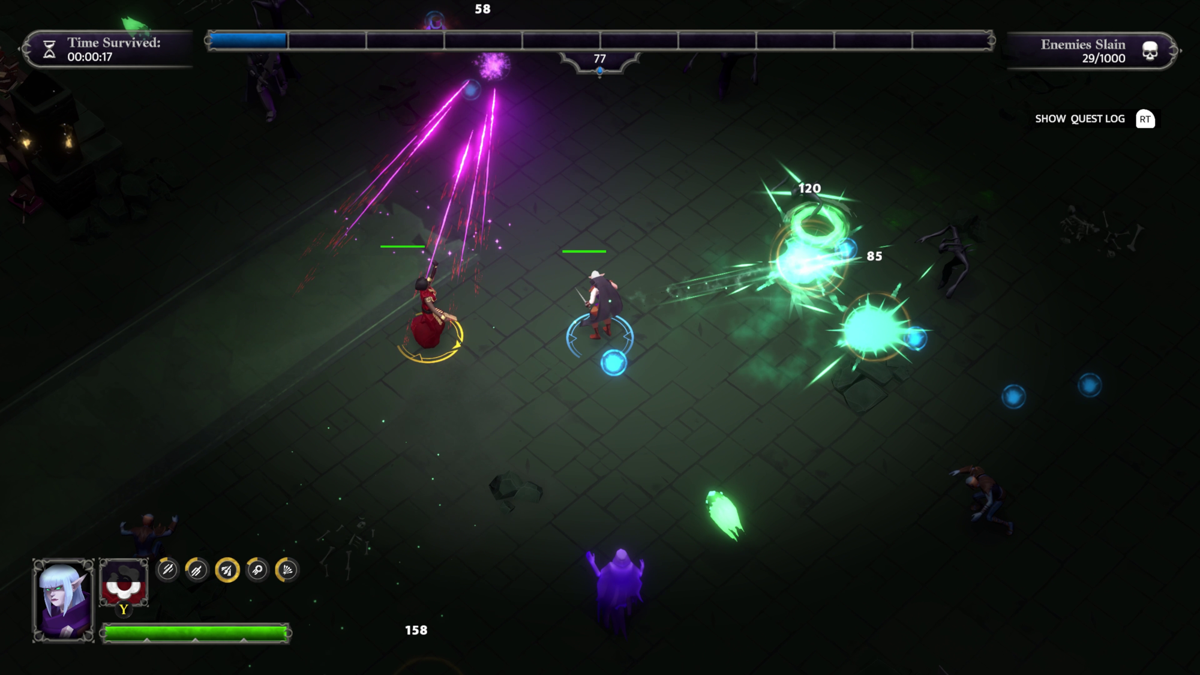The swarm survivor genre is exploding with more and more titles, and we have another one from BKOM Studios called Pathfinder: Gallowspire Survivors. Each new swarm survival game adds a different twist to set itself apart from the rest of the pack, so the questions we have to ask are what does this game do differently, and is it just as fun or better than what is out there?
Disclaimer: is that this game is Early Access and not complete, so things mentioned in this review can be changed upon the full release.
Title: Pathfinder: Gallowspire Survivors
Platform: PC (review)
Developer: BKOM Studios
Publisher: BKOM Studios
Release Date: TBD (Early Access)
Price: $6.99
First and foremost… this is a Swarm Survivor game. What does that mean? It means that you can expect to kill monsters in increasingly difficult waves to… well… survive. You will collect experience when you defeat monsters, level up, and then get to choose between weapons, passive abilities, and such to create a build to help you survive.
Pathfinder: Gallowspire Survivors does not change this formula. You still kill monsters, you still are given the basic three choices, and once all is said and done, whether you succeed or fail, you’ll walk away with currencies that you can use to acquire permanent upgrades to help you get further in your next run. All pretty standard fare stuff when it comes to swarm survivor games.
So, what does this game do differently than the others?
First is that there is no timer to defeat. Normally, you would have anywhere between 10 to 30 minutes to try and survive, depending on the game. Here, there is a timer, but it is merely there to tell you how long you have survived. Instead, you are given a monster counter in the upper right-hand corner of the screen. Once that counter is filled, you complete the level. On average, it takes around three minutes to fill that counter and proceed.
The first level requires 400 enemies, the second and third require 500, and it only goes up from there. But, at the same time, the deeper you get into the levels, the more enemies will be thrown at you, so it all balances out.
Another thing Pathfinder: Gallowspire Survivors does differently is their permanent upgrades. In most games, you would spend currency on upgrades that affected all of the characters that the game had to offer. Not here. Every character has their own upgrade path. Even though there is experience from killing monsters, you receive character experience at the end of every run. Gain enough of it, and you’ll get tokens that you can spend on upgrading that character. You can also get tokens as quest rewards but more on that later.
Characters have two tabs to upgrade, each using their own unique currency. There is a tab that upgrades your states, such as Constitution, Strength, Dexterity, Intelligence, Wisdom, and Charisma. Certain characters are better at using certain stats than others. Thankfully, pressing Y (or Triangle) will bring up a helpful window that explains what they do and what classes benefit from them the most to help you decide where to allocate your points.
The other tab is a talent tree that is unique to each character. For the warrior, you can increase the power of your attacks, how much health gain you benefit from when you raise your constitution, etc. The Rogue focuses on dodging and movement speed, while the Wizard is all about enhancing magical schools.
Despite that, there is a permanent upgrade system, but it deals with the game’s five types of potions. There are health potions, armor potions, speed potions, magnet potions (to draw in experience gems), and breath potions (which help you clear enemies, by breathing purple fire on them for a short time). You can permanently increase the efficacy of these potions using gold which you earn during runs and by completing quests.
At first, one of the options when leveling up deals with increasing the rate at which you find potions during your run. It doesn’t seem like a lucrative option to take as one of your passive abilities, but once you spend some time upgrading those potions, suddenly, that option looks way more attractive!
Each character has an “oh crap” button to help you out, aka an ultimate. The warrior has a shield wall for help with protection, the rogue has a smoke bomb for increased dodge chance, and the wizard just flat-out pulls a Za Warudo and stops time. When leveling during a run, you can get options to increase the power of these ultimates as well.
Another difference here is the way chests work. Typically, you beat a hard enemy, and you get a chest. That is the same here, but chests also randomly spawn throughout the run. You don’t just walk up and open it, though. You have to wait for a ring to fill up before you open the chest… kind of like capturing a point in an FPS game. Once the chest opens, you’re given 5 upgrades… but… you might not get all 5. Instead, any D&D player will instantly recognize our old friend, the D20 (20-sided die). Whatever number it lands on determines how many of those 5 upgrades you will get.
These chests will always contain upgrades based on your currently chosen weapons and passives so a nice strategy is to ignore picking up experience gems and go straight for the chests when they spawn so that you have a chance at getting 4 upgrades (one is always money) for your primary weapon out of one chest.
This creates a sense of strategy because it makes you choose between going for more chests or killing monsters to gain experience and levels, but with the game throwing more monsters at you over time, dragging out the level to reap as many rewards as possible becomes impossible to do as you’re just going to kill enemies simply by running past them.
When the level ends, you do get 30 seconds before you’re teleported, so you can pick up leftover experience or go grab that chest you were working your way toward. A nice touch is that if you do find a chest, the 30-second timer will pause while you’re capturing it, so there’s is no wasted loot!
Speaking of loot, there are those aforementioned quests. You are given three at a time, and they are pretty simple to complete. They require objectives such as “Complete X amount of floors,” “Stand still for X amount of seconds,” “Kill x amount of bosses,” etc. If you don’t like the quest, you can spend a small amount of gold and reroll it to something else. They reward character experience, gold, and sometimes talent point tokens and/or stat-boosting tokens, so always try to complete your quests! Active quests are automatically tracked on the right side of the screen during a run, so you can always check your progress!
As far as gameplay goes, it’s what you would expect from a swarm survival game. The weapons are nice and varied between the three classes; however, some weapons are shared between them to keep the pool looking like it’s deeper than it really is, but what it offers in Early Access is already enough to put together multiple builds per character.
The characters each have their own playstyles, with the warrior being short-range, the rogue being mid-range, and the wizard being long-range. The formula is pretty simple with the maps themselves. Clear 3 floors, then face a boss. The bosses are fun and have multiple phases to them, which brings a sense of challenge to the game. (I particularly love the third boss as it switches your perspective to top-down and has some really cool mechanics).
Another nice thing that this game adds is a companion system. For example, if you pick the wizard, you can choose the warrior or rogue to accompany you. You don’t get to use any of their abilities, but they will follow you around and use their base weapon attacks to help you deal damage. Yes, they can take damage, yes, they can die, and yes, you can stand on top of them to fill up a circle and revive them. It just adds another layer of “resource management” to the game if the resource is a person!
Overall, Pathfinder: Gallowspire Survivors doesn’t change too much of the formula when it comes to swarm survivor games; however, it is addicting, fun, and offers lots of replay value and variety by making it where you have to upgrade every class individually. It’s a formula that can easily extend the game’s life and reinstate the challenge once one of your characters becomes overpowered simply by adding a new character in the future.
It’s off to a fantastic start, and I can’t wait to see how this game fully comes to fruition once it is out of early access. Fans of swarm survivor games who want something that feels different but doesn’t completely try to break and reinvent the tried and true (albeit still infant) formula will find high enjoyment with this one! For $7, it should be an easy pickup that you will enjoy!
An Early Access copy of the game was provided for review by BKOM Studios.
Review Disclosure Statement: An Early Access copy of Pathfinder: Gallowspire Survivors was provided for review by BKOM Studios for review purposes. For more information on how we review video games and other media/technology, please review our Review Guideline/Scoring Policy for more info.
Affiliate Link Disclosure: One or more of the links above contain affiliate links, which means at no additional cost to you, we may receive a commission should you click through and purchase the item.


